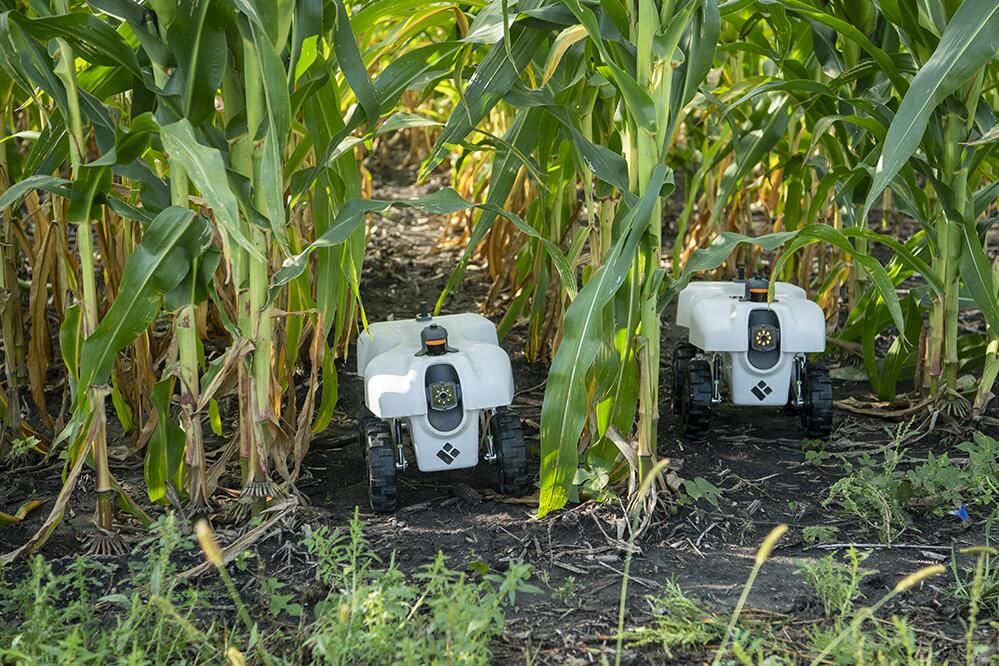Digital tools can transform agriculture to be more environmentally sustainable

URBANA, Ill. – Agricultural producers face dual challenges of increasing output for a growing world population while reducing negative effects on the environment. Digital technologies and artificial intelligence can facilitate sustainable production, but farmers must weigh opportunities and risks when deciding whether to embrace such tools.
In a new Agricultural Economics paper, University of Illinois scientists propose a research methodology to measure producers’ willingness to adopt new technologies related to digital agriculture.
The paper outlines some of the sustainability challenges for U.S. agriculture and why it is difficult to address those challenges with conventional technologies, explains Madhu Khanna, distinguished professor in agricultural and consumer economics (ACE) and director of the Institute for Sustainability, Energy and Environment (iSEE) at the U of I.
“Digital and artificial intelligence technologies can play a role in moving us to a more sustainable future, but there are barriers to usage,” Khanna says. “Farmers are typically cautious of adopting new technology until the benefits have been well demonstrated and uncertainties have been reduced, and they see their neighbors and other peers adopting.”
The paper's authors include agricultural economists, engineers, computer scientists, and environmental scientists. All are part of the Center for Digital Agriculture (CDA) and the USDA National Institute of Food and Agriculture / National Science Foundation’s AIFARMS Institute at the U of I. These projects have a goal to promote the application of artificial intelligence towards a future of sustainable farming.
Digital technologies can compile large amounts of information and offer site-specific management guidelines, helping to increase production efficiency and reduce environmental harm. For example, precision irrigation systems can monitor crop and soil conditions to ensure site-specific watering. Artificial intelligence can provide information about crop health and soil fertility to help adjust input application rates and reduce nitrogen runoff.
Digital technologies can also help address farm labor shortages. Small robots that move under the canopy can enable site-specific fertilization, seeding, diagnostics, and mechanical weeding to reduce pesticide usage. Under-canopy robots can also seed cover crops between rows, helping to improve soil health.
While these innovative tools may offer benefits such as lower costs and improved yield, they also require upfront investments and farmers must acquire new skills and knowledge to operate them. Many digital technologies are still in the early development stages, and immediate results may not be obvious. There are limited programs available to reward farmers for the ecosystem services they provide, and often they are not enough to cover the cost of adoption, the researchers say.
“Existing research suggests that in addition to economic factors, behavioral factors play a big role in technology adoption. Even though something may look profitable, there are often hidden costs or hidden barriers such as concerns about the risk or how long it might take to get the payback. It's important to consider all of those behavioral factors as we're thinking about the implementation of these new technologies,” Khanna states.
While other studies focus on technology adoption that has already occurred, Khanna and co-authors suggest a novel approach that enables researchers to predict willingness to adopt based on a dynamic analysis.
“We recommend combining survey-based methods with spatial and temporal computer simulation methods where we can model the effect of adoption decisions on the ecosystem. This allows us to capture the feedback loop between decisions today and environmental outcomes tomorrow, which then affects subsequent decisions,” says Shadi Atallah, associate professor in ACE and co-author on the paper.
“For example, managing herbicide resistance in the long run by using robots for non-chemical weeding illustrates how costs and benefits are dynamic. Outcomes are influenced by the decisions farmers make, and also the decisions their neighbors are making,” Atallah adds.
For the survey, farmers are presented with choice cards that describe various scenarios – what the neighbors are doing, the level of weeds, cost of the technology, and other factors. Each participant gets a subset of cards presenting different combinations. Survey data is then combined with agent-based modeling, which captures individual differences at the farmer level, rather than population level. Computer simulations then model the dynamic effects of farmers’ decisions in these different scenarios over time.
“In a nutshell, we're advocating to move away from static analysis to more spatially dynamic analysis of adoption, and we conduct computational experiments on how policy will affect the adoption of technologies for a more sustainable agriculture,” Atallah concludes.
The researchers are currently conducting a survey of new technology adoption for cover crops with a random sample of farmers.
The paper, “Digital transformation for a sustainable agriculture in the United States: Opportunities and challenges” is published in Agricultural Economics. [https://doi.org/10.1111/agec.12733]. Authors are Madhu Khanna, Shady Atallah, Saurajyoti Kar, Bijay Sharma, Linghui Wu, Chengzheng Yu, Girish Chowdhary, Chinmay Soman, and Kaiyu Guan.
This work is supported by Agriculture and Food Research Initiative (AFRI) Grant No. 2020-67021-32799/project accession no.1024178 from the USDA National Institute of Food and Agriculture.